![]()
![]()
![]()
Use LEFT and RIGHT arrow keys to navigate between flashcards;
Use UP and DOWN arrow keys to flip the card;
H to show hint;
A reads text to speech;
62 Cards in this Set
- Front
- Back
|
Cell Body (soma) |
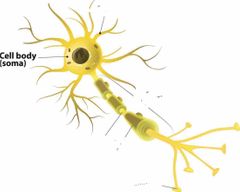
|
|
|
Multipolar Neuron: Nucleus |
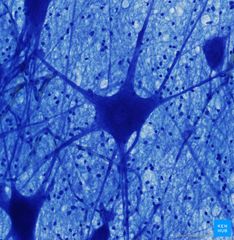
|
|
|
Multipolar Neuron: Nucleolus |
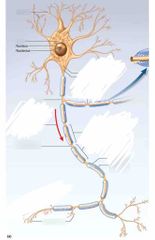
|
|
|
Multipolar Neuron: Axon and Dendrites |

|
|
|
Spinal Cord and Ganglion: Central Canal |

|
|
|
Optic Nerve (II)
|

Somatic -sensory vision -is an outgrowth of the brain so technically a tract but is always taught as a cranial nerve |
|
|
Mammillary Body |

needed for survival |
|
|
Pituitary Gland |
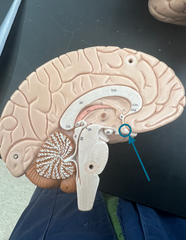
controls growth, metabolism, reproduction, ect. |
|
|
Cerebral Aqueduct |
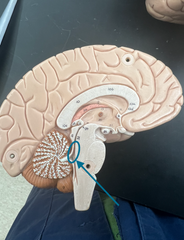
CSF flows thru |
|
|
Pineal Gland |
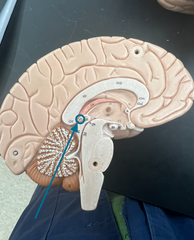
secretes melatonin hormone which regulated circadian rhythm |
|
|
Thalamus |
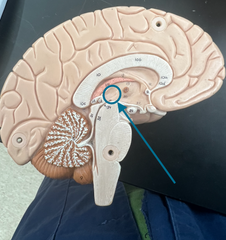
main relay point for sensory information that will be projected to somatosensory cortex (dot is inter thalamic adhesion) |
|
|
Hypothalamus |
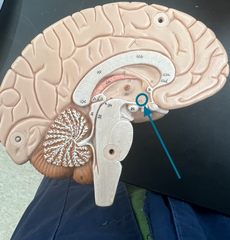
specific nuclei control various functions: Master control of ANS Master control of endocrine system Regulation of body temp. Control of emotional behavior Control food/water intake Regulated sleep/wake cycle |
|
|
Abor Vitae and Folia |
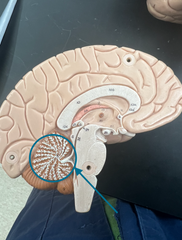
Arbor Vitae- branches/trunk
Folia-leaves/foliage |
|
|
Abducens Nerve CN VI |
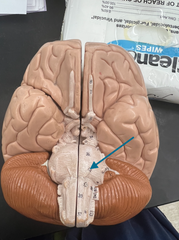
Motor (somatic) innervated and abducts eyeball |
|
|
Olfactory Nerve CN I |
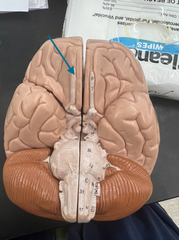
Somatic sensory smell (visceral) |
|
|
Brainstem |
connect forebrain and cerebellum to spinal cord, passageway for all tracts between cerebrum and spinal cord -contains autonomic and reflex centers required for survival -houses nuclei of many cranial nerves -had three major regions: midbrain, pons, and medulla oblongata |
|
|
Midbrain |
contains cranial nerves: CN III and CN IV |
|
|
Pons |
houses cranial nerves: CN V, CN VI, and CN VII |
|
|
Central Canal |
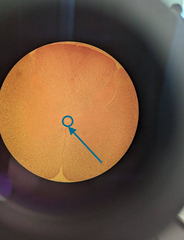
|
|
|
Anterior Horns |
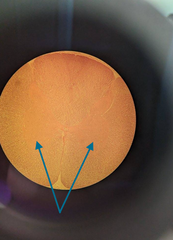
Houses somas |
|
|
Posterior Horns |
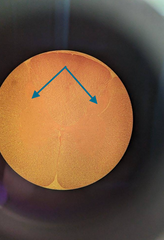
|
|
|
Cervical Nerve Pairs and Ganglia |

Yellow (beads=ganglia) C1, C2, C3: Controls head and neck C4: upward shoulder movement C5: deltoids and biceps C6: wrist extensors and innervation to biceps C7: triceps and wrist extensors C8: hands and finger flexion |
|
|
Thoracic Nerve Pairs |

Green (beads=ganglia) T1 & T2: supplies top of chest, arms, and hands T3, T4, T5: supplies into chest wall and aids breathing T6, T7, T8: supplies chest and downing abdomen T9, T10, T11, T12: supplies abdomen and lower back |
|
|
Conchlea |
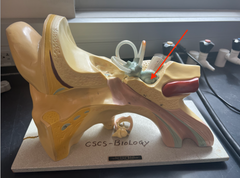
auditory transduction |
|
|
Semicircular Canals |
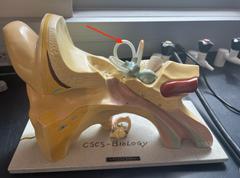
detects movement of head |
|
|
Tympanic Cavity |
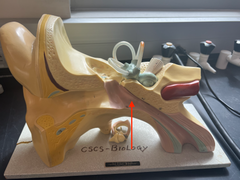
|
|
|
Tympanic membrane |

|
|
|
External Acoustic Meatus |
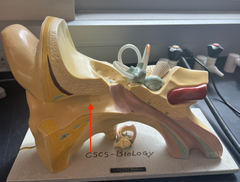
|
|
|
Cribiform Plate Sagittal View |
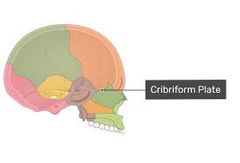
|
|
|
Transverse view of cubiform plate and olfactory bulb |

|
|
|
Pyramids |
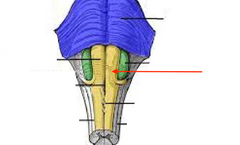
carry efferent signals to spinal cord or brainstem |
|
|
Olives |

motor coordination |
|
|
Dura Mater |

|
|
|
Subarachnoid Space |

|
|
|
Scala Media |
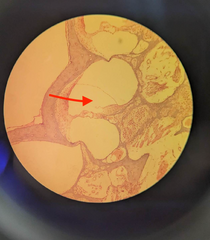
|
|
|
Scala Tympani |
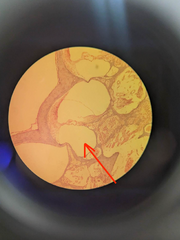
|
|
|
Scala Vestibuli |
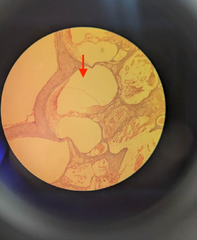
|
|
|
Organ of Corti |
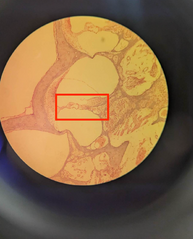
|
|
|
Vesicular Membrane |
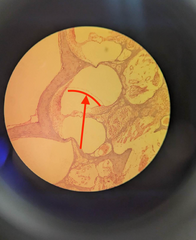
|
|
|
Basilar Membrane |

|
|
|
Epineurium |
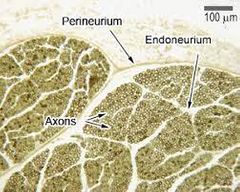
|
|
|
Axons |

|
|
|
Nodes of Ranvier |
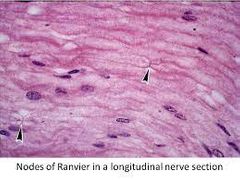
|
|
|
Sclera |
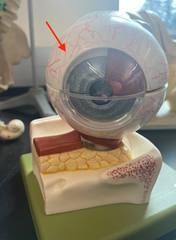
|
|
|
Cornea |
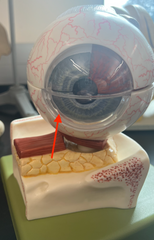
|
|
|
Insula |
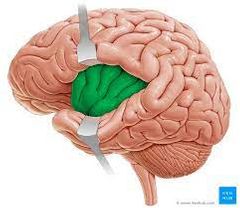
|
|
|
Occipital Lobe |
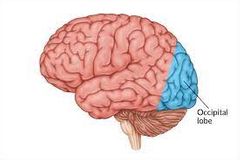
|
|
|
Temporal Lobe |
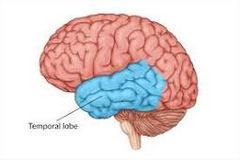
|
|
|
Parietal Lobe |
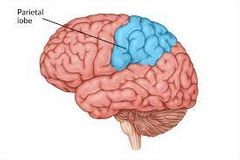
|
|
|
Corpus Callosum |

|
|
|
Lateral Sulcus |
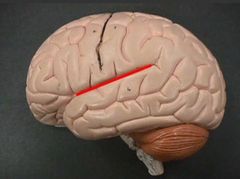
|
|
|
Precentral Gyrus |
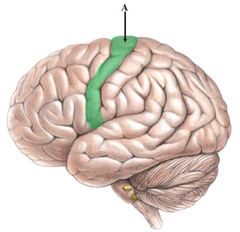
|
|
|
Postcentral Gyrus |
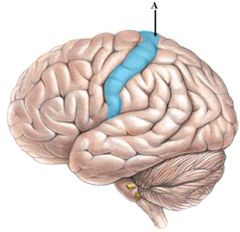
|
|
|
Ganglion |
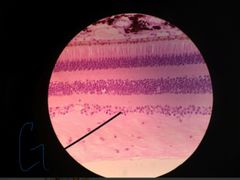
|
|
|
Rods (pink) |
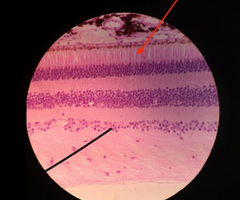
|
|
|
Cones |
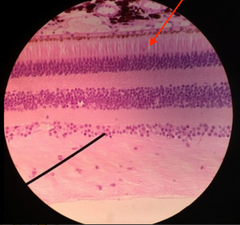
|
|
|
Bipolar Cells |
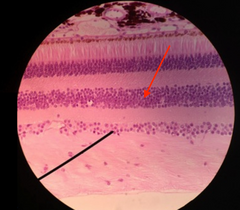
|
|
|
Cauda Equina |

|
|
|
Film Terminale |

|
|
|
Cervical Plexus |
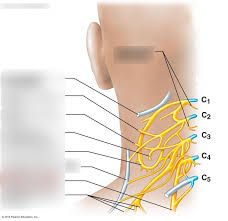
|
|
|
Lumbar and Sacral Plexus |
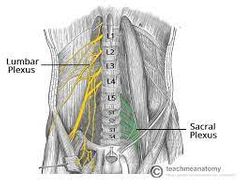
|
|
|
Brachial Plexus |
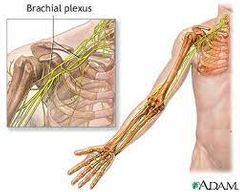
|

